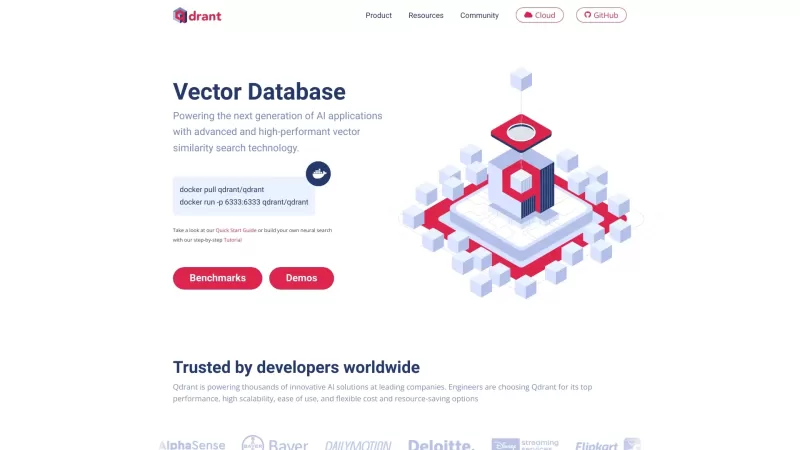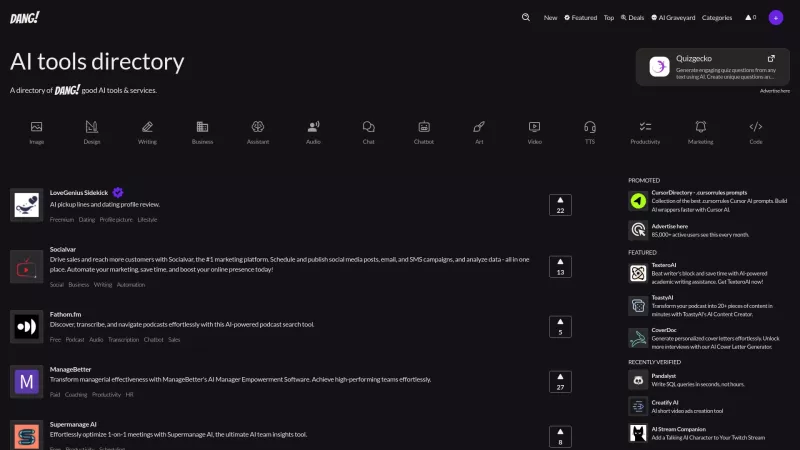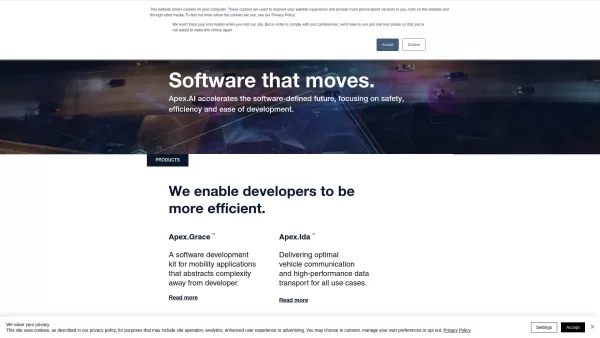Qdrant
Open-source Vector Database and Search Engine.
Qdrant Product Information
Ever wondered what Qdrant is all about? Well, let me break it down for you. Qdrant is this cool, open-source vector database and search engine that's been crafted with love using Rust. It's designed to turbocharge your vector similarity searches, making them faster and more scalable than you might expect. And the best part? It comes with a super user-friendly API that'll make your life a whole lot easier.
How to Use Qdrant?
So, you're eager to dive into Qdrant? Fantastic! You've got a couple of options. You could grab the Qdrant Docker image and set it sailing on your machine. Or, if you're more of a hands-on learner, why not check out the Quick Start Guide or the step-by-step Tutorial? They're there to help you build your very own neural search system from the ground up.
Qdrant's Core Features
Qdrant isn't just another database; it's packed with features that'll make you go, "Wow, that's exactly what I needed!" Here's a quick rundown:
Lightning-Fast Vector Similarity Search
Ever needed to find things that are similar to each other, but fast? Qdrant's got you covered with its speedy search capabilities.
Vector Embeddings and Neural Network Encoders
Whether you're dealing with images, text, or anything else, Qdrant supports vector embeddings and neural network encoders, making your searches even smarter.
User-Friendly API
Forget about complicated setups. Qdrant's API follows the OpenAPI v3 spec, making it a breeze to integrate and use.
Custom HNSW Algorithm
Qdrant uses a custom tweak of the HNSW algorithm to ensure your searches are not just fast, but also incredibly accurate.
Filterable Results
Need to narrow down your search? Qdrant lets you filter results based on payload values, giving you exactly what you're looking for.
Rich Data Types and Query Conditions
With support for all sorts of data types and query conditions, Qdrant is versatile enough to handle whatever you throw at it.
Distributed and Cloud-Native
Built for the modern world, Qdrant's architecture is both distributed and cloud-native, ensuring you can scale as needed.
Efficient Resource Utilization
Qdrant makes sure you get the most out of your computational resources, so you're not left twiddling your thumbs waiting for results.
Qdrant's Use Cases
Wondering where Qdrant shines? Here are some of the ways you can put it to work:
Similar Image Search
Want to find images that look alike? Qdrant can help you sift through your image library with ease.
Semantic Text Search
Looking for text that means the same thing? Qdrant's semantic search capabilities will make your searches more meaningful.
Recommendations
Whether it's recommending products, movies, or anything else, Qdrant can help you give your users personalized suggestions.
FAQ from Qdrant
- What is Qdrant?
- Qdrant is an open-source vector database and search engine built in Rust, designed for fast and scalable vector similarity search.
- How can I use Qdrant?
- You can use Qdrant by pulling its Docker image or by following the Quick Start Guide and Tutorial to build your own neural search system.
- What are the core features of Qdrant?
- Qdrant's core features include fast vector similarity search, support for vector embeddings and neural network encoders, a user-friendly API, custom HNSW algorithm for accuracy, filterable results, support for rich data types and query conditions, distributed and cloud-native architecture, and efficient resource utilization.
Need to get in touch with Qdrant's team? Whether it's support, customer service, or refund inquiries, you can find all the contact details on the contact us page.
Curious about the cost? Check out the Qdrant Pricing to see what fits your budget.
Want to see Qdrant in action? Head over to their YouTube channel for some cool demos and tutorials.
Stay updated with the latest from Qdrant by following them on LinkedIn and Twitter.
For those who love to dive into the code, Qdrant's GitHub repository is the place to be.
Qdrant Screenshot
Qdrant Reviews
Would you recommend Qdrant? Post your comment

Qdrant is super fast for vector searches! 🚀 Used it for my AI project, and the Rust backbone makes it crazy reliable. The API is a breeze to work with, but I wish the docs had more examples for newbies like me. Still, it’s a game-changer for semantic search! 😎

















